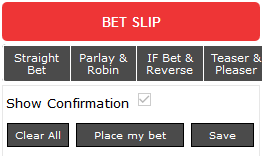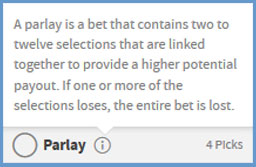Sports Betting Guide
Gambling on sports has become a popular trend among sports fans and, with the advent of the Internet, has spread to the far reaches of the world. For those who have thought about it but were never sure how, betting on sports is not too difficult. You must be aware of some of the basics in order to get started. Here is a betting guide to help the newbie bettor have some success.
Common Abbreviated Terms
There are several terms that bettors will encounter as they enter the sports betting world. Here are the more common ones you will see.
• ATS: against the spread
• BB: back-to-back, which refers to when teams are playing on consecutive days
• SU: straight up
Common Terms All Bettors Should Be Familiar With

As with anything new, there will be some terms that will be used frequently. You may not understand them at first, but as you get more comfortable with sports betting knowing these terms inside and out will help you be more successful.
• Moneyline: a straight up wager on the outright winner of a sporting event, it is usually expressed in terms of money value. For example, if Detroit is listed as -150 over Pittsburgh, you would risk $150 to win $100 when betting on the favorite (Detroit).
• Juice: the commission that sportsbooks collect for taking bets, normally commissions are around 10 percent for most bets.
• Teaser: used in ATS betting, bettors can increase their odds of winning in exchange for a lower rate of return, bettors can take more points or less points in order to have a better chance to win, all individual teaser bets must win in order to cash.

• Parlay: one bet that consists of at least two separate wagers, all bets on the ticket must win for a bettor to cash, any losses on an individual bet and the parlay is a loser, parlays will payout more, but bettors increase their chances of losing by betting on more than one game.
All About The Spread
Bettors will notice that when betting on a sporting event, take college or pro football as an example, that there will be a spread. Now, bettors can pick a straight up winner; that is easy. Bettors choose the team that wins the game. The spread makes picking a winner a little more challenging.
If a game between the San Francisco 49ers and the Jacksonville Jaguars has the following spread: Jacksonville @ San Francisco (-11.5), the 49ers are favored to win by 11.5 points. As a bettor, you believe that the 49ers will win, but when involving the spread, the 49ers must win by more than 11.5 points. If San Francisco wins by 11, you lose your bet. Some spreads will be expressed in halves – 8.5, 13.5, etc. – and others will be whole numbers. There is a difference between a whole number spread and one expressed as a half. In the above example, you lose when San Francisco wins by 11, but you push (or tie) if the spread was -11 instead of -11.5.
Bettors can also bet on the Over or the Under when it comes to various sports. One of the more popular sports to do so is football. Using our same example, you may see the following: Jacksonville (44) @ San Francisco (-11.5). The 49ers are favored by 11.5 points and the point total for the game is 44 points. Bettors can bet on whether the teams’ combined score for the game will be more or less than 44 points. If you bet Over and the final score of the game was San Francisco 33, Jacksonville 17, you would be a winner since the total number of points scored in the game was 50.
When bettors look at the odds, or lines, of different sporting events, they will notice that those odds can change from day to day. The lines move to help the sportsbooks balance out the money that is being bet on both opponents. If people are betting heavily on one team, say the 49ers in the above example, the line will change to attract more people to bet on the Jaguars.
